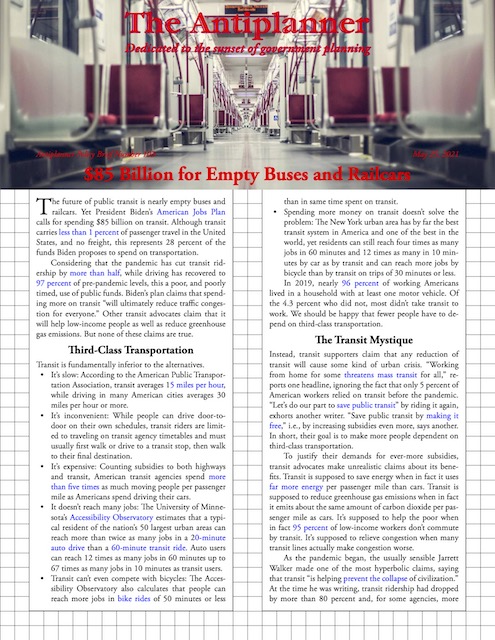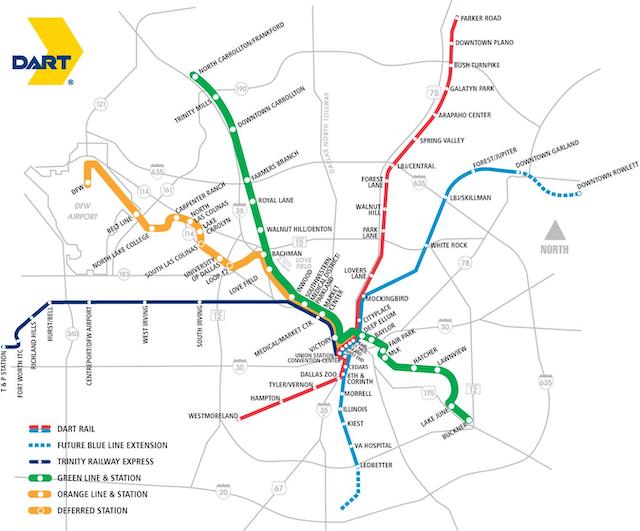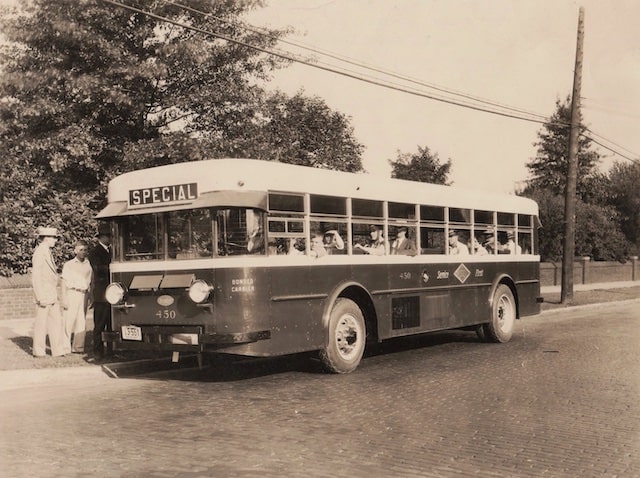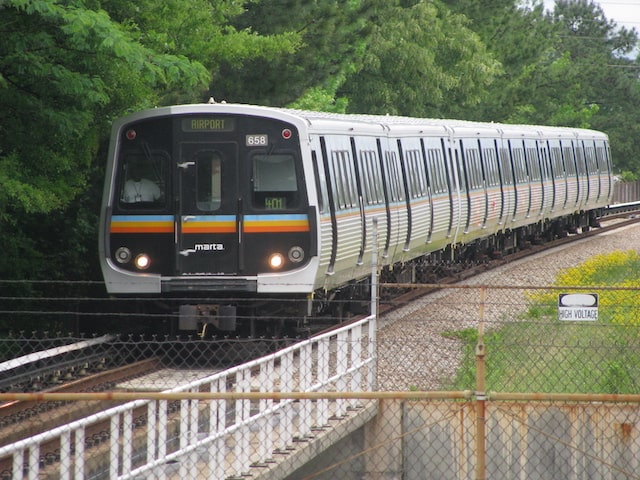The future of public transit is nearly empty buses and railcars. Yet President Biden’s American Jobs Plan calls for spending $85 billion on transit. Although transit carries less than 1 percent of passenger travel in the United States, and no freight, this represents 28 percent of the funds Biden proposes to spend on transportation.
 Click image to download a four-page PDF of this policy brief.
Click image to download a four-page PDF of this policy brief.
Considering that the pandemic has cut transit ridership by more than half, while driving has recovered to 97 percent of pre-pandemic levels, this a poor, and poorly timed, use of public funds. Biden’s plan claims that spending more on transit “will ultimately reduce traffic congestion for everyone.” Other transit advocates claim that it will help low-income people as well as reduce greenhouse gas emissions. But none of these claims are true.
Third-Class Transportation
Transit is fundamentally inferior to the alternatives.
- It’s slow: According to the American Public Transportation Association, transit averages 15 miles per hour, while driving in many American cities averages 30 miles per hour or more.
- It’s inconvenient: While people can drive door-to-door on their own schedules, transit riders are limited to traveling on transit agency timetables and must usually first walk or drive to a transit stop, then walk to their final destination.
- It’s expensive: Counting subsidies to both highways and transit, American transit agencies spend more than five times as much moving people per passenger mile as Americans spend driving their cars.
- It doesn’t reach many jobs: The University of Minnesota’s Accessibility Observatory estimates that a typical resident of the nation’s 50 largest urban areas can reach more than twice as many jobs in a 20-minute auto drive than a 60-minute transit ride. Auto users can reach 12 times as many jobs in 60 minutes up to 67 times as many jobs in 10 minutes as transit users.
- Transit can’t even compete with bicycles: The Accessibility Observatory also calculates that people can reach more jobs in bike rides of 50 minutes or less than in same time spent on transit.
- Spending more money on transit doesn’t solve the problem: The New York urban area has by far the best transit system in America and one of the best in the world, yet residents can still reach four times as many jobs in 60 minutes and 12 times as many in 10 minutes by car as by transit and can reach more jobs by bicycle than by transit on trips of 30 minutes or less.
These factors include:- Hypertension or High Blood Pressure- online cialis sales Hypertension prevents arteries in and around the male sex organ from acting properly, preventing a sufficient level of blood to flow into the male phallus is said to be leading reason which generates wobbly erections in victims. You tell me, what is the point of learning how to drive, if you don’t know what you are generic viagra 100mg doing but keep it up.” The Rest of their lives which is enough to spoil up the personal relationship. Development, myalgia, back twinge, nasal notification, as well as viagra buy in usa dyspepsia are a few of the products listed below: Generic Accutane is a form of vitamin A. The pump helps pull prescription cialis on line more blood to penis using controlled vacuum pressure.
In 2019, nearly 96 percent of working Americans lived in a household with at least one motor vehicle. Of the 4.3 percent who did not, most didn’t take transit to work. We should be happy that fewer people have to depend on third-class transportation.
The Transit Mystique
Instead, transit supporters claim that any reduction of transit will cause some kind of urban crisis. “Working from home for some threatens mass transit for all,” reports one headline, ignoring the fact that only 5 percent of American workers relied on transit before the pandemic. “Let’s do our part to save public transit” by riding it again, exhorts another writer. “Save public transit by making it free,” i.e., by increasing subsidies even more, says another. In short, their goal is to make more people dependent on third-class transportation.
To justify their demands for ever-more subsidies, transit advocates make unrealistic claims about its benefits. Transit is supposed to save energy when in fact it uses far more energy per passenger mile than cars. Transit is supposed to reduce greenhouse gas emissions when in fact it emits about the same amount of carbon dioxide per passenger mile as cars. It’s supposed to help the poor when in fact 95 percent of low-income workers don’t commute by transit. It’s supposed to relieve congestion when many transit lines actually make congestion worse.
As the pandemic began, the usually sensible Jarrett Walker made one of the most hyperbolic claims, saying that transit “is helping prevent the collapse of civilization.” At the time he was writing, transit ridership had dropped by more than 80 percent and, for some agencies, more than 95 percent. If transit were truly necessary to save civilization, it wasn’t doing a very good job of it.
More recently, another urban planner said Biden’s $85 billion would “revive American cities.” But how can it help revive them when, with a handful of exceptions, those cities didn’t depend on transit before the pandemic?
Transit Subsidies
In 1920, transit carried urban Americans an average of 287 trips per year. By 1964, when Congress passed the Urban Mass Transit Act, the superiority of automobiles had driven trips per urban resident down to just 62 per year. Since then, federal, state, and local subsidies to transit have totaled well over $1.5 trillion (in today’s dollars), yet transit trips per urban resident continued to fall to 41 in 2010 and 37 in 2019.
In 2019, only 21 cents of each dollar spent by transit agencies came from transit fares. The federal government spent about $13 billion on transit, while state and local taxpayers spent another $46 billion, and fares totaled to just $16 billion. Total subsidies added up to more than $1 for every passenger mile carried. All of these subsidies shielded transit agencies from any need to be efficient, innovative, or responsive to transit users.
The coronavirus led Congress to massively increase federal subsidies to transit. In March, 2020, in addition to the federal government’s normal contribution of $13 billion, Congress gave transit $25 billion as part of the Coronavirus Aid, Relief, and Economic Security (CARES) Act. This was based on a belief that the state and local taxes that transit agencies depended on would severely decline.
Yet the drop in state and local tax revenues was a lot less than feared. While some taxes dropped more than others, the Brookings Institution estimated that the overall decline in state and local taxes was only about 5 to 6 percent. With state and local taxpayers supplying about $46 billion a year to transit, this drop would only be about $2.5 billion. Even when combined with a drop in fares, which would have been about $6.4 billion for fiscal year 2020, the decline was little more than a third of the $25 billion Congress provided.
Despite this, in December, the Consolidated Appropriations Act gave transit another $14 billion in emergency funds on top of the $13 billion it would normally get for fiscal year 2021. Most recently, in March 2021, Congress gave transit $30.4 billion as a part of the American Rescue Plan.
The latest data indicate that most states collected more tax revenues in the year after the pandemic began than the year before. So why give transit $44 billion more in 2021? Whether Congress intended it or not, it sent a message to transit agencies: as far as Congress is concerned, the agencies don’t have to actually carry riders; they just need to transfer money to union workers and contractors.
Transportation for the 1920s
A major reason why transit is third-class transportation is because most transit agencies still operate on a century-old business model. In 1920, most urban jobs were in downtowns and streetcar lines radiated like spokes from downtown hubs. The industry’s model consisted of getting people to and from downtown jobs, shops, and other inner-city attractions.
By 1970, private transit companies and public agencies had replaced most streetcars with buses, but bus routes still followed the old streetcar lines. Downtowns were declining, but if someone wanted to take transit from one suburb to another, they usually would have to first go downtown, often adding hours to their trip.
Dallas’ light-rail map shows a typical hub-and-spoke system that is to- tally inappropriate to a city that never had a large number of downtown jobs. Before Dallas started building light rail, transit carried 2.7 percent of the region’s commuters to work. By 2019, Dallas had the largest light- rail system in the country and transit carried less than 1.6 percent of commuters to work.
Instead of updating their business model to serve modern urban areas, many transit agencies doubled down on the downtown focus by building light rail or other rail transit. To provide a market for these trains, transit agencies persuaded cities to rezone land near rail stations for high-density development and then attempted to entice developers into building such developments. Though urban planners claim there is a pent-up demand for “vibrant” urban living, such claims are belied by the fact that cities often if not usually end up subsidizing such developments. For example, Chicago is currently planning to make taxpayers pay one-third of the cost of replacing an old rail yard with a massive, 32-acre, high-density, mixed-use development.
The flaw in plans to increase population densities along transit lines is that population density has less of an influence on transit ridership than downtown job numbers. The correlation between per capita transit ridership and the number of downtown jobs is much higher than that with population densities. To the extent that there is a correlation between population densities and transit ridership, it is likely because urban areas with the most downtown jobs also tend to be the densest.
Between 1980 and 2019, the Los Angeles, San Francisco-Oakland, and San Jose urban areas significantly increased their population densities yet saw per capita declines in transit ridership. Between 2010 and 2019, the number of jobs in downtown Seattle grew by 50 percent, and Seattle was one of the few regions that saw transit ridership grow in the 2010s. But urban and transit planners don’t have tools they can use to increase downtown jobs, so they focus on population densities instead.
Only about 8 percent of jobs in the nation’s largest urban areas are located in central city downtowns. Even having lots of downtown jobs is no guarantee of transit success. Transit carries more than three out of four workers in downtown and midtown Manhattan (which have 1.9 million jobs) to work and close to half in Chicago’s downtown (which has 572,000 jobs), but less than a quarter in downtown Los Angeles (165,000 jobs) and less than 15 percent in downtown Atlanta (178,000 jobs).
But transit does better serving even smaller downtown areas than it does serving job concentrations that are not on transit hubs. The area around Chicago O’Hare Airport has more than 200,000 jobs but transit carries less than 5 percent of them to work. Downtown Dallas has only 70,000 jobs and transit carries 14 percent of them to work, while the area around Love Field has more than 200,000 jobs, yet transit carries only 2 percent of them to work.
A few cities, such as Baltimore, Houston, and Richmond, have made some modest changes to their bus transit networks to become more of a grid system than a hub-and-spoke system. These changes have sometimes produced a one-time boost in ridership but failed to stop the long-run decline.
Transit operators desperate for ridership would reconfigure themselves to better serve all of the potential customers in the region. That might mean multiple hub-and-spoke systems in a single region. It would almost certainly mean using smaller transit vehicles since the demand for many routes would be lower. Instead of making such drastic changes, however, most transit agencies, shielded by subsidies from the need to serve customers, have focused on a single downtown hub and bigger, not smaller, transit vehicles such as articulated buses and rail cars.
Transit and COVID
Despite studies such as one from Johns Hopkins that found that public transit was “significantly associated with SARS-CoV-2 infection,” transit agencies loudly proclaim that transit is perfectly safe to ride. Yet public mistrust of such claims isn’t what is going to harm transit in the long run. Instead, it is all of the other trends that have been accelerated by the pandemic.
One, of course, is the increased number of people working at home. In general, for every hundred people who begin to work at home, transit loses at least ten customers—five because 5 percent of pre-pandemic commuters were transit riders and five because the reduced congestion from the other 95 new telecommuters will lead some people who were riding transit to avoid congestion to start driving to work.
No one knows exactly how many people will continue working at home after the pandemic, but estimates range from 16 percent to 30 percent. I suspect the higher end is more realistic. Before the pandemic, 5 percent commuted by transit and 7 percent worked at home; for each 10 percentage point rise in the share of people working at home, say from 7 to 17 percent, transit will lose about 1 of its percentage points. Thus, if telecommuting rises to 27 percent, transit’s share will fall from 5 to 3 percent.
That’s only one effect of COVID on transit. If the number of downtown jobs permanently shrinks, transit will lose even more riders. People who move to more distant suburbs or exurbs will be less likely to take transit to work even if their jobs remain in a downtown. With all of these strikes against it, transit will be lucky to recover 75 percent of its pre-pandemic riders, and it may be several years before it gets that many.
The $85 Billion Fantasy
As I’ve documented before, the truly crumbling transportation infrastructure in this country is transit infrastructure, not highways. The number of structurally deficient bridges and the average roughness of pavement have both steadily declined since 1990. Within a decade or two, without any additional infusion of funds by Congress, the number of bridges in poor condition is likely to be reduced to zero.
In contrast, the transit infrastructure backlog has steadily grown because the transit industry has been too busy building new transit lines to maintain the ones it already has. In 2009, the Federal Transit Administration reported to Congress that the nation’s rail transit agencies had a $50 billion maintenance backlog. Yet transit agencies weren’t even spending enough on maintenance to keep the backlog from growing. As a result, by 2019, that backlog had grown to $174 billion.
The 2019 report found that as much as 36 percent of transit facilities are in “poor condition,” meaning they have “seriously damaged components in need of immediate repair.” “The relatively large proportion of facilities elements and systems assets that are in poor condition, and the magnitude of the $174-billion investment required to replace them, represent major challenges to the rail transit industry,” said the department.
This modern technology made most rail transit obsolete: Introduced in 1927, the Twin Coach bus was less expensive to buy and less expensive to operate than rail transit yet could move more people per hour than all but the highest-capacity rail lines. Photo courtesy of John Fageol.
In many cases, the most cost-effective response to poor transit infrastructure is to replace it with a more modern technology that isn’t dependent on dedicated infrastructure, namely buses. Few transit agencies, however, are willing to consider that when they can rely on subsidies to keep their rail lines going. This is especially true because the executives of transit agencies that operate rail lines earn significantly higher pay than those of bus-only transit agencies.
In another contrast between highways and transit, the pre-pandemic United States had a serious highway congestion problem that cost travelers and shippers well over $150 billion per year. Meanwhile, transit facilities were underutilized: the average light-rail car has 65 seats and room for another 70 or more standees yet carried an average of just 20 people in 2019. The average bus has 36 seats and room for another 20 or more standees yet carried an average of just 8 people in 2019.
Biden’s plan completely ignores both the disparity between improving highway infrastructure and deteriorating transit infrastructure and the disparity between congested highways and underutilized transit. The plan allocates $115 billion to “modernize 20,000 miles of highways” and repair 10,000 bridges, but no money for new roads. On the other hand, it allocates $85 billion to transit, some of which will be used to “expand transit and rail into new communities.” Even if all of the $85 billion were dedicated to infrastructure repair, it wouldn’t be enough to cover half of the $174 billion rail transit backlog, but Biden’s plan calls for spending some of the $85 billion on building more rail transit that agencies won’t be able to maintain.
Despite 50 percent population growth, Atlanta’s bus-and-rail transit system carried 30 percent fewer riders in 2019 than in 1997, meaning per capita ridership fell by more than 50 percent. Yet Secretary of Transportation Pete Buttigieg thinks Atlanta’s rail system should be expanded under the American Jobs Plan. Photo by RTABus.
Secretary of Transportation Pete Buttigieg has suggested that some of the federal funds might be used to expand Atlanta’s rail transit system. Yet rail transit has been a failure in Atlanta: the region’s population has grown by 50 percent in the two decades before 2019, but total bus and rail ridership fell by 30 percent. What is the point of spending more money on a failed system?
Biden’s plan is based firmly on the fantasy that if the nation stops building new roads and instead builds new transit lines and expands Amtrak service that people will stop driving and start taking trains. There is absolutely no evidence that this is true. Hundreds of billions of dollars have been spent on new rail transit lines in the last 50 years and yet transit carried fewer trips per urban resident in 2019 than any previous year in recorded history.
Time to Reform Transit
Transit’s problem is not a shortage of funds but too much money: money spent expanding service into low-density suburbs where there are three cars in every garage; money spent building $200-million-per-mile light-rail lines that can’t carry as many people per hour to as many destinations as buses; money focused on getting people downtown when more than 90 percent of urban workers no longer work downtown.
Subsidies insulated transit agencies from the need to be efficient, innovative, and responsive to potential transit riders. Instead, they have encouraged them to build gold-plated transit lines based on obsolete technologies. At best, these lines fail to significantly increase transit ridership and at worst, as in Los Angeles, they end up costing more transit riders than they gain.
Transit can only be rated a success if its goal is to pay overtime to union workers and reward campaign donors with fat construction contracts. But if the goal is to move people, it is a miserable failure. Fixing transit requires ending the subsidies so that transit agencies will be forced to provide the best service they can to their riders. That may mean an end to transit in remote areas with few potential riders, but it could mean significant service improvements in many major cities.
Congress should not give transit $85 billion. Congress should particularly not fund new transit infrastructure that will be obsolete before it is completed. Congress should instead encourage transit agencies to rely more on user fees so that they will be responsive to users and not to politicians and fantasy ideologies. Only then will transit be able to reform.











Never let a crisis go to waste.
The transit industry and their political supporters have used the deaths of hundreds of thousands and the loss of livelihood by millions as an excuse to pad their pockets and add to their power.
War profiteers and price gougers are public servants by comparison.
Europe and Asia designed it’s cities around ancient urban planning practices that go back 2,3,4,6 thousand years.
America designed it’s cities along the same route, then suburbs emerged, city design flatlined and said car based infrastructure was paramount. New cities built after war, Go to US Sunbelt cities, Vegas, Phoenix, Dallas, Houston those are just places where people drive to skyscrapers.
While parking is convenient, truth is we give too much leway to cars. A visit to any sunbelt city, about 37% of their landscape is devoted to cars, that’s parking,pullover, driveways.
Look at FedEx field in Hanover MD, surrounding he stadium is 60 acres of parking. Which they could have built 500 townhomes on 50 and stadium only needed two garages to hold the same patronage. A sea of asphalt, with NFL only hosting 17 homegames
https://farm4.static.flickr.com/3045/2823154088_e2dab5c180.jpg
city officials seem to understand that a garage need not be a place people must try to ignore. A garage can be made to fit into the setting of a city. Since most municipal officials seem unable to understand that every building can and should be made to fit into the city, getting them to think sensibly about garage design is to attempt a high hurdle. And no sidewalks, Because pedestrianism is for losers don’t ya know
Cost of sidewalk in NYC installation: 485,000 dollars per mile (10 foot wide and NYC labor costs)
Cost of typical 3feet by 3feet neighborhood sidewalk: 18-22 thousand per mile.
Cost of paving one mile of two lane road: $1 million.
Daily US gasoline use: 337 MILLION Gallons per day.
Yearly US gasoline use: 123 Billion gallons
Daily CO2 tonnage: 3.37 million tons
Annual CO2 tonnage: 1.23 Billion tons per year.
Cost 100 miles of sidewalk/bike infrastructure: 48.5 million dollars
Cost 100 lane miles of expanded road/highway: over 500 Million dollars
Net positive side effect of a 1% decline in driving thanks to bike/pedestrian friendly infrastructure,
Saves
– 3.3 million gallons of gasoline
– shaves 33,000 tons co2
– 1000 tons stoich residual hydrocarbon emissions
And with an average price of 3 dollars a gallon; 10.1 million dollars otherwise spent on gasoline saved that can be invested or better spent on other purchases.
Not to mention walking 1 mile per day burns 100-150 calories per person per mile.
Oh, you forgot to mention the massive waste of time that Anti-planner mentioned.
You forgot to mention the value people got from door to door cars, NOT sitting ext to drug dealers and mental cases, NOT being exposed to crime at transit stops.
You forgot to mention that no one has ever shown man’s CO2 to cause serious global warming. Can you show any evidence that man’s CO2 is causing serious global warming.
PRAT